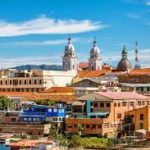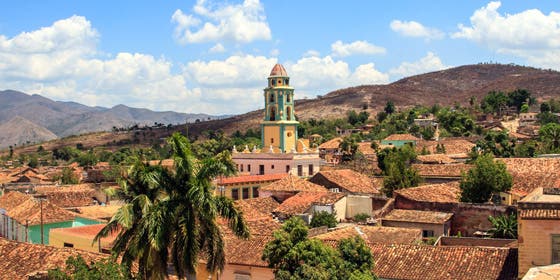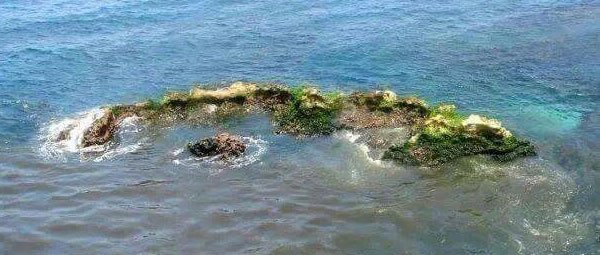SANTIAGO DE CUBA, SECOND LARGEST CITY OF CUBA 870 KMS FROM HAVANA. PHOTOS/VIDEOS
Santiago de Cuba is the second-largest city in Cuba and the capital city of Santiago de Cuba Province. It lies in the southeastern area of the island, some 870 km (540 mi) southeast of the Cuban capital of Havana.
The municipality extends over 1,023.8 square kilometers (395.3 sq mi), and contains the communities of Antonio Maceo, Bravo, Castillo Duany, Daiquirí, El Caney, El Cobre, El Cristo, Guiteras, Leyte Vidal, Moncada and Siboney.
Historically Santiago de Cuba has long been the second-most important city on the island after Havana and still remains the second-largest. It is on a bay connected to the Caribbean Sea and is an important seaport.
HISTORY
Santiago de Cuba was the fifth village founded by Spanish conquistador Diego Velázquez de Cuéllar on July 25, 1515. The settlement was destroyed by fire in 1516 and was immediately rebuilt. The first cathedral was built in the city in 1528. From 1522 until 1589, Santiago was the capital of the Spanish colony of Cuba.
https://youtu.be/LZoLltR4y7E
Press ^ Here
SANTIAGO DE CUBA DOCUMENTARY
The city had a huge influx of French and British immigrants in the late 18th and early 19th centuries. Some eighteen thousand refugees, both ethnic French whites and free people of color, and African freedmen, came from Saint-Domingue in the summer of 1803 during the last days of the Haitian slave revolt, which had started in 1791.
Near the end of the century, during the Spanish–American War, Santiago was the site of the major defeat of Spanish troops at San Juan Hill on July 1, 1898. After capturing the surrounding hills, United States General William Rufus Shafter laid siege to the city. Spain later surrendered to the United States after Admiral William T. Sampson destroyed the Spanish Atlantic fleet just outside Santiago’s harbor on July 3, 1898. Cuba had declared independence from Spain but was occupied by US troops for several years.
José Martí, a Cuban poet, writer, and national hero, is buried in Santa Ifigenia Cemetery in this city.
ROLE IN THE CUBAN REVOLUTION
Santiago was the home of the 20th-century revolutionary hero Frank País. Shortly after the ill prepared armed attack on the Moncada Barracks on July 26, 1953, by Fidel Castro with a small contingent of men. Frank País began talking with students and young working people informally, drawing around him what became an extremely effective urban revolutionary alliance. He and his followers developed highly organized cells, coordinating a large-scale urban resistance that became instrumental in the success of the Cuban Revolution.
País’ group prepared carefully, accruing weapons, collecting money, collecting medical supplies. They published a cheap newsletter that reported news critical of the government, attempting to counter Batista’s censorship of the mainline press.
In the summer of 1955, País’s organization merged with Castro’s July 26 Movement. País became the leader of the new organization in Oriente province. Two years later he was betrayed to the police and was fatally shot after his capture. The ashes of País were interred in Santa Ifigenia Cemetery, where Marti had been buried.
CULTURE
Santiago de Cuba was the hometown of poet José María Heredia. The Teatro Heredia, which hosts theater and cultural events, is named in his honor. It is the birthplace of the world-famous Bacardi brand, which was started by Facundo Bacardi Masso in 1862. It now houses a museum that displays the extensive art collection of the Bacardí family.
Santiago de Cuba is well known for its cultural life. Some of Cuba’s most famous musicians, including Compay Segundo, Ibrahim Ferrer, and Eliades Ochoa and trova composer Ñico Saquito (Benito Antonio Fernández Ortiz) were born in the city or in one of the villages surrounding it. They have contributed to the typical, country-like music of the city.
Santiago de Cuba is well known for its traditional dances, most notably son, from which salsa has been derived. The city celebrates Carnival in July, although it typically precedes Lent. With the city preoccupied with the holiday, Castro chose July 26 to enter undetected into the city to assault the Moncada Barracks. During Carnival, traditional conga music is played in the streets on a traditional pentatonic trumpet, called the trompeta china.
The city features several historic architectural styles, from Baroque to neoclassical. Many colonial buildings have huge windows and balconies, where people can enjoy views of the steep streets and wooded hills. Preserved historical treasures include the first Spanish dwelling in the Americas, the first cathedral in Cuba, Cobre mine, the first copper mine opened in the Americas; and the first Cuban museum.
WORLD HERITAGE SITE
The local citadel of San Pedro de la Roca is inscribed on the UNESCO World Heritage List as “the most complete, best-preserved example of Spanish-American military architecture, based on Italian and Renaissance design principles”. The Baconao Park was inscribed on the UNESCO World Heritage Biosphere Reserve List in 1987.
GEOGRAPHY
Santiago de Cuba is located in the southeast of the island at coordinates 20° 01′ 17.42″ N 75° 49′ 45.75″ W, some 870 km (540 mi) of the capital, Havana. Historically Santiago de Cuba has been the second-largest city in Cuba, behind Havana. It features a bay connected to the Caribbean Sea and is a major port. The municipality of Santiago de Cuba, it’s the capital city, is the most populated municipality of Cuba.
The city has developed at the foot of the bay and is surrounded on land by the Sierra Maestra. It has a hot and humid climate. The landscapes include the complexity of urban elements, and natural greenery, and marine settings, all at the same time. It has an irregular offset to the bay, which contributed to the development of an urban setting where the avenues and streets are steep or descend.
DEMOGRAPHICS
In the 2012 population census, the city of Santiago de Cuba recorded a population of 431,272 people.
COMMUNICATIONS
Santiago is served by Antonio Maceo Airport. Cubana de Aviación connects the city with Havana, Port Au Prince, and Santo Domingo, with other airlines connecting to other cities in the Caribbean and North America.
The public transport in the city, as in Havana, is carried out by two divisions, Omnibus Metropolitanos (OM) and Metrobus. The Metrobus serves the inner-city urban area, with a maximum distance of 20 km (12 mi). Omnibus Metropolitanos (OM) connects the adjacent towns and municipalities in the metropolitan area with the city center, with a maximum distance of 40 km (25 mi).
Ferrocarriles de Cuba railways and ASTRO inter-city buses connect the city with Havana’s Central Railway Station and with most other main cities of Cuba. The main railway station is an important hub of the national railways. Located in the city center, near the harbor, this was completely rebuilt in 1997.
The city of Santiago is also crossed by the Carretera Central highway and by the southern section of the A1 motorway, largely unbuilt, that will link it with Havana when it is completed.
Area code(s) +53 22
SCHOOLS
The main tertiary education institution is the University of Oriente, Santiago de Cuba, which was originally established in the wake of the Second World War in 1947.
(READ SANTIAGO DE CUBA NATIVES AND RESIDENTS IN THE SPANISH SECTION)
SANTIAGO DE CUBA, SEGUNDA CIUDAD MÁS GRANDE DE CUBA A 870 KMS DE LA HABANA.PHOTOS/VIDEOS.
Santiago de Cuba es la segunda ciudad más grande de Cuba y la capital de la provincia de Santiago de Cuba. Se encuentra en la zona sureste de la isla, a unos 870 km (540 millas) al sureste de la capital cubana de La Habana.
El municipio se extiende sobre 1.023,8 kilómetros cuadrados (395,3 millas cuadradas) y contiene las comunidades de Antonio Maceo, Bravo, Castillo Duany, Daiquirí, El Caney, El Cobre, El Cristo, Guiteras, Leyte Vidal, Moncada y Siboney.
Históricamente, Santiago de Cuba ha sido durante mucho tiempo la segunda ciudad más importante de la isla después de La Habana y sigue siendo la segunda más grande. Está en una bahía conectada al mar Caribe y es un importante puerto marítimo. En el censo de población de 2012, la ciudad de Santiago de Cuba registró una población de 431,272 personas.
HISTORIA
Santiago de Cuba fue la quinta aldea fundada por el conquistador español Diego Velázquez de Cuéllar el 25 de julio de 1515. El asentamiento fue destruido por un incendio en 1516 y fue reconstruido inmediatamente. La primera catedral se construyó en la ciudad en 1528. Desde 1522 hasta 1589, Santiago fue la capital de la colonia española de Cuba.
https://youtu.be/36YjgvE7xhw
Presione ^ Aqui
SANTIAGO DE CUBA VISTA DESDE EL AIRE.
La ciudad tuvo una gran afluencia de inmigrantes franceses y británicos a finales del siglo XVIII y principios del XIX. Unos dieciocho mil refugiados, tanto blancos de etnia francesa como gente libre de color, y libertos africanos, llegaron de Saint-Domingue en el verano de 1803 durante los últimos días de la revuelta de esclavos haitianos, que había comenzado en 1791.
Cerca del final del siglo, durante la Guerra Hispanoamericana, Santiago fue el escenario de la gran derrota de las tropas españolas en el Cerro San Juan el 1 de julio de 1898. Después de capturar las colinas circundantes, el general estadounidense William Rufus Shafter asedió a la ciudad. España se rindió más tarde a los Estados Unidos después de que el almirante William T. Sampson destruyera la flota atlántica española a las afueras del puerto de Santiago el 3 de julio de 1898. Cuba había declarado su independencia de España pero fue ocupada por tropas estadounidenses durante varios años.
José Martí, poeta, escritor y héroe nacional cubano, está enterrado en el cementerio de Santa Ifigenia de esta ciudad.
PAPEL EN LA REVOLUCIÓN CUBANA
Santiago fue el hogar del héroe revolucionario del siglo XX Frank País. Poco tiempo después del mal preparado ataque armado contra el Cuartel Moncada el 26 de julio de 1953 por Fidel Castro con un pequeño grupo de hombres. Frank País comenzó a hablar informalmente con estudiantes y jóvenes trabajadores, dibujando a su alrededor lo que se convirtió en una alianza revolucionaria urbana extremadamente efectiva. Él y sus seguidores desarrollaron células altamente organizadas, coordinando una resistencia urbana a gran escala que se convirtió en un instrumento para el éxito de la Revolución Cubana.
El grupo de País se preparó cuidadosamente, acumulando armas, recolectando dinero, recolectando suministros médicos. Publicaron un boletín barato que informaba sobre noticias críticas al gobierno, intentando contrarrestar la censura de Batista sobre la prensa principal.
En el verano de 1955, la organización de País se fusionó con el Movimiento 26 de julio de Castro. País se convirtió en el líder de la nueva organización en la provincia de Oriente. Dos años más tarde fue denunciado a la policía y recibió un disparo mortal después de su captura. Las cenizas de País fueron enterradas en el cementerio de Santa Ifigenia, donde había sido enterrado Martí.
CULTURA
Santiago de Cuba fue la ciudad natal del poeta José María Heredia. El Teatro Heredia, que alberga eventos teatrales y culturales, recibe su nombre en su honor. Es el lugar de nacimiento de la mundialmente famosa marca Bacardi, que fue fundada por Facundo Bacardi Masso en 1862. Ahora alberga un museo que muestra la extensa colección de arte de la familia Bacardí.
Santiago de Cuba es conocida por su vida cultural. Algunos de los músicos más famosos de Cuba, como Compay Segundo, Ibrahim Ferrer y Eliades Ochoa, y el compositor de trova Ñico Saquito (Benito Antonio Fernández Ortiz) nacieron en la ciudad o en alguno de los pueblos que la rodean. Han contribuido a la música country típica de la ciudad.
Santiago de Cuba es bien conocido por sus bailes tradicionales, sobre todo el son, del que se deriva la salsa. La ciudad celebra el Carnaval en julio, aunque suele ser anterior a la Cuaresma. Con la ciudad preocupada por la festividad, Castro eligió el 26 de julio para ingresar sin ser detectado a la ciudad para asaltar el Cuartel Moncada. Durante el Carnaval, la música tradicional de conga se toca en las calles con una trompeta pentatónica tradicional, llamada trompeta china.
La ciudad presenta varios estilos arquitectónicos históricos, desde el barroco hasta el neoclásico. Muchos edificios coloniales tienen enormes ventanales y balcones, donde la gente puede disfrutar de las vistas de las empinadas calles y colinas boscosas. Los tesoros históricos preservados incluyen la primera vivienda española en las Américas, la primera catedral en Cuba, la mina Cobre, la primera mina de cobre abierta en las Américas; y el primer museo cubano.
PATRIMONIO DE LA HUMANIDAD
La ciudadela local de San Pedro de la Roca está inscrita en la Lista del Patrimonio Mundial de la UNESCO como “el ejemplo más completo y mejor conservado de la arquitectura militar hispanoamericana, basada en los principios del diseño italiano y renacentista”. El Parque Baconao fue inscrito en la Lista de Reservas de la Biosfera del Patrimonio Mundial de la UNESCO en 1987.
GEOGRAFÍA
Santiago de Cuba se ubica al sureste de la isla en las coordenadas 20 ° 01 ‘17.42 “N 75 ° 49’ 45.75” W, a unos 870 km (540 millas) de la capital, La Habana. Históricamente Santiago de Cuba ha sido la segunda ciudad más grande de Cuba, detrás de La Habana. Cuenta con una bahía conectada al mar Caribe y es un puerto importante. El municipio de Santiago de Cuba, es la ciudad capital, es el municipio más poblado de Cuba.
La ciudad se ha desarrollado al pie de la bahía y está rodeada de tierra por la Sierra Maestra. Tiene un clima cálido y húmedo. Los paisajes incluyen la complejidad de los elementos urbanos, la vegetación natural y los entornos marinos, todo al mismo tiempo. Tiene un desvío irregular a la bahía, lo que contribuyó al desarrollo de un entorno urbano donde las avenidas y calles son empinadas o descendentes.
DEMOGRAFÍA
En el censo de población de 2012, la ciudad de Santiago de Cuba registró una población de 431,272 personas.
COMUNICACIONES
Santiago es servido por el Aeropuerto Antonio Maceo. Cubana de Aviación conecta la ciudad con La Habana, Puerto Príncipe y Santo Domingo, con otras aerolíneas que conectan con otras ciudades del Caribe y América del Norte.
El transporte público en la ciudad, al igual que en La Habana, es realizado por dos divisiones, Ómnibus Metropolitanos (OM) y Metrobus. El Metrobus sirve al área urbana del centro de la ciudad, con una distancia máxima de 20 km (12 millas). Omnibus Metropolitanos (OM) conecta las localidades y municipios adyacentes del área metropolitana con el centro de la ciudad, con una distancia máxima de 40 km (25 millas).
Los ferrocarriles Ferrocarriles de Cuba y los autobuses interurbanos ASTRO conectan la ciudad con la estación central de trenes de La Habana y con la mayoría de las demás ciudades principales de Cuba. La estación principal de trenes es un centro importante de los ferrocarriles nacionales. Ubicado en el centro de la ciudad, cerca del puerto, fue completamente reconstruido en 1997.
La ciudad de Santiago también es atravesada por la Carretera Central y por el tramo sur de la autopista A1, en gran parte sin edificar, que la unirá con La Habana cuando esté terminada.
Código (s) de área +53 22
ESCUELAS
La principal institución de educación terciaria es la Universidad de Oriente, Santiago de Cuba, que se estableció originalmente a raíz de la Segunda Guerra Mundial en 1947.
NATIVOS Y RESIDENTES
Desi Arnaz – actor de televisión / cine, productor y director de banda
Emilio Bacardí – industrial y filántropo
Eusebia Cosme – declamdora negra, actriz
Orestes Destrade – el jugador de béisbol profesional
Emilio Estefan – productor musical y esposo de la cantante Gloria Estefan
Silvina Fabars – Ganadora del Premio Nacional de Danza de 2014 y bailarina principal del Conjunto Folclórico Nacional
Ibrahim Ferrer – músico
Sindo Garay – músico
José María Heredia y Heredia – poeta
Pancho Herrera, un jugador de béisbol profesional
Alberto Juantorena – medallista de oro olímpico, Juegos Olímpicos de 1976
Faizon Love – actor de cine y televisión, comediante
Konnan – luchador profesional
Olga Guillot – cantante
Paul Lafargue – periodista, crítico literario, escritor político y activista
La Lupe – cantante de salsa
Antonio Maceo Grajales – héroe de la independencia
Rita Marley – cantante y esposa del cantante de reggae Bob Marley
José Martí, héroe de la independencia; enterrado en Santiago de Cuba
Miguel Matamoros – músico
Eliades Ochoa – músico
Frank Pais – organizador urbano y revolucionario, Movimiento 30 de Noviembre.
Richard Pérez-Peña – reportero del New York Times
Jorge Reyes – autor
Jorge Mas Canosa, revolucionario y fundador de una Organización Nacional Cubana exiliada
Marco Rizo – pianista, compositor y arreglista
Mariblanca Sabas Alomá – feminista y periodista
Esteban Salas y Castro – compositor barroco
Ñico Saquito (Benito Antonio Fernández Ortiz) – músico y compositor de trova
Compay Segundo – músico
Agencies/ Wiki/ Extractos/Excerpts/ Internet Photos/ YouTube/ QW Studio/ Ray Milá/ Arnoldo Varona/ www.TheCubanHistory.com
THE CUBAN HISTORY, HOLLYWOOD.



 SANTIAGO DE CUBA, Second Largest City of the Island 870 km from Havana. * SANTIAGO DE CUBA, Segunda Ciudad Más Grande de Cuba a 870 Kms de la Habana. PHOTOS/VIDEOS.
SANTIAGO DE CUBA, Second Largest City of the Island 870 km from Havana. * SANTIAGO DE CUBA, Segunda Ciudad Más Grande de Cuba a 870 Kms de la Habana. PHOTOS/VIDEOS.












